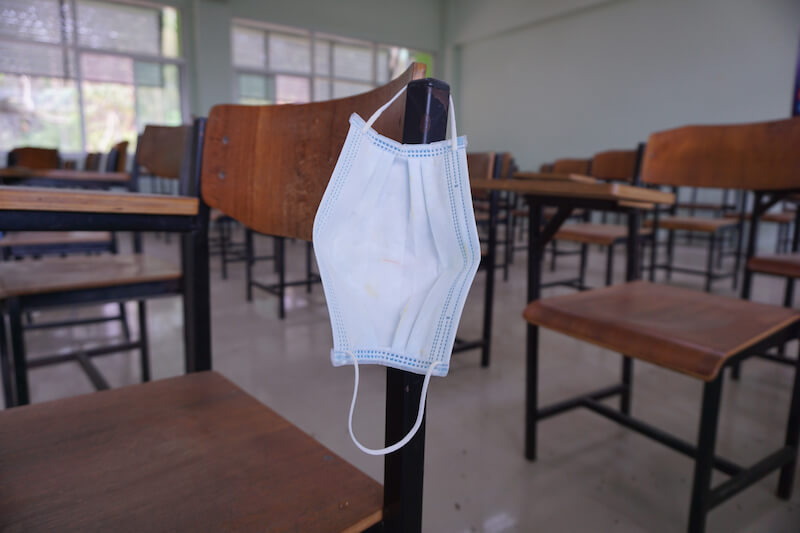COVID-19 occasioned substantial shifts in education. Preceding 2019, most school districts were increasing technology use to support learning, but nothing like the shifts that occurred in March 2020. If students already had a take-home device, internet access, and an online learning management system and curriculum, the virtual instruction was rapid. But without this infrastructure, districts implemented hybrid instruction, knowing numerous at-risk students were disengaged. To address this need, the distribution of Chromebooks diminished the classroom-to-home connectivity gap. Most districts quickly adopted learning management systems, Zoom, and applications for assessing learning progress. Remote learning introduced blended-learning protocols and adjusted school schedules.
 Accelerating Reform
Accelerating Reform
While these changes resulted in what some view as updated instructional models and the hope of a more standardized curriculum, others point to the unfinished learning resulting in widened achievement gaps, less autonomy for teachers, and less parent satisfaction with K-12 education. The pandemic laid the groundwork for accelerating the practices many K-12 education-reform advocates have favored, including shifting the emphasis from traditional academic achievement to 21st-century skills, defined as communication, collaboration, critical thinking, creativity, and life skills. Other trends increasingly infuse instruction with health, safety, and social-emotional wellness, to remove non-academic barriers for student success. For some, this equates to dilution of skill mastery and traditional content learning. There is a pivot from the learning standards movement to whole-child learning objectives, incorporating more holistic measures of success, including career and civic engagement around authentic project-based learning. While positive outcomes may follow, this focus can also become easily derailed by agenda-driven experiences, dismissing academic rigor. Tom Vander Ark, an education futurist, points to increasing interest in credentialing learning with demonstrations of mastery in naturalistic settings vs. on standardized tests. Building digital records of accomplishments and enhancing the transcript system to include competencies vs. lists of courses is gaining support. Finally, an emphasis on equity seems to be center stage nationwide in K-12 education, with associated training for students and teachers, adoption of aligned curricula, and student assignments tailored to raise awareness of “learner marginalization.”
New Educational Opportunities
Education is experiencing positive direction from trends like using technology to customize instruction for individual students, equipping parents with tools to understand how and what their children are learning, so they can advocate effectively for their values and a quality education. We can capitalize on new educational opportunities and flexibilities like micro-schools, after-school programs, and problem-based learning pedagogies that are student-centered. Embracing hybrid educational models that accommodate individual student preferences for where and how they become educated can be more welcoming to parental input. Conversely, education that forgoes mastery of content and skills cannot support the thinking required for life success and can devolve into a subjective and splintered experience around ambiguous terms that currently define 21st-century skills. The hope of a common curriculum and equity emphasis can lead to mediocrity and low expectations, ill-serving the students these practices were designed to support.
In every age, there is an opportunity to examine all things and hold fast to what is good (I Thessalonians 5:21). We must examine trends and realities in education, their impact on our children, and then in wisdom, choose the good, and influence what could be better.
“We see nothing truly till Jesus is our light. Use this telescope of the cross, and you shall see far and clear.” – Charles H. Spurgeon
References
Vander Ark, T. (2021, Sept. l). 5 Changes, 5 Shifts and 5 implications for What’s Next in Education. ascd.org. https://bit.ly/30zTyc8
Evers, Williarnson M. (2021, March 31). K-12 Education: Policy Analysis and Reform. independent.org. https://bit.ly/3oCIEMf
Torchia, Rebecca. (2021, March 3). CoSN2021: What Innovation Trends Permeate K-12 Education? edtechmagazine.com https://bit.ly/3HzwWt2
Schleicher, Andreas. (2020). The impact of Covid-19 on education: insights from education at a glance 2020. voced.edu.au https://bit.ly/301GmSq
Linchpin et al. (Oct.10, 2021). Trends that will Transform K-12 Education in 2022. https://bit.ly/3wSV8BW
Editor’s Note: This article was originally published in the Fall 2021 issue of Colorado Christian University’s Beyond Magazine. It is republished here, with permission.
About the Author
 Dr. Debora Scheffel serves as Dean of the School of Education, at Colorado Christian University. She earned a Master’s degree from the University of Denver in special education, a PhD in communication sciences and disorders from Northwestern University, Evanston, Illinois, and completed a National Institutes of Mental Health post-doctoral fellowship in cognitive science at the University of California, San Diego. Her research interests are in education reform policy, reading, and oral language development and disabilities in children.
Dr. Debora Scheffel serves as Dean of the School of Education, at Colorado Christian University. She earned a Master’s degree from the University of Denver in special education, a PhD in communication sciences and disorders from Northwestern University, Evanston, Illinois, and completed a National Institutes of Mental Health post-doctoral fellowship in cognitive science at the University of California, San Diego. Her research interests are in education reform policy, reading, and oral language development and disabilities in children.

